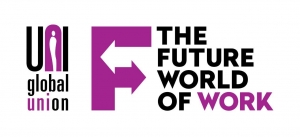November trading setback at H&M surprises markets

From The Times
December 16, 2008
Ian King, Deputy Business Editor
Hennes & Mauritz, Europe's second-largest clothing retailer, surprised the market on Monday with news that November trading has been weaker than expected.
The Stockholm-listed company said that November sales were up 7 per cent on the same month last year. However, on a like-for-like basis, which strips out new stores or ones where floorspace has been added, they were down 4 per cent on 2007.
This was the fourth consecutive month that like-for-like sales had fallen and were worse than most analysts had expected. It was also the first time, during the recent downturn, that H&M has failed to meet most analyst forecasts. Shares of H&M, which had already fallen by 20 per cent this year, closed down SKr5.5 at SKr301.5.
H&M and Inditex, the Spanish company behind chains such as Zara and Mango, were previously assumed to be coping better than rivals mainly because of their wider geographic spread and because they operate at the more resilient discount end of the market. Inditex, which specialises in getting cut-price versions of the latest catwalk designs into its shops, reported weaker than expected quarterly sales last week.
H&M gave no detail on which markets had been problematic, but it is thought that the company's Scandinavian heartland has been most troublesome. It has 1,738 stores in 33 countries, up from 1,522 a year ago, and 68,000 employees.
The retailer said that it would continue to increase its number of stores globally by between 10 per cent and 15 per cent annually. It has entered markets such as Japan, Egypt and Saudi Arabia but most new outlets are still being opened in Europe and the United States. Analysts at JPMorgan Securities told clients: “In the Nordic region, which accounts for around a fifth of H&M's sales, the clothing market is suffering from intense competition and overcapacity.”
They said that H&M was outperforming the wider market in both the UK, which accounts for about 7 per cent of total sales, and the US, which accounts for 6 per cent of group sales.
They added: “H&M appears to have performed broadly in line with the German market — which accounts for a quarter of its sales — where industry sales were down 3 per cent for the month. In Germany we think that young fashion specialists, such as H&M, are holding up better than menswear chains and department stores. H&M should also be benefiting from well-organised promotional activity.”
Christian Nagstrup, analyst at Denmark's Jyske Bank, said: “They haven't been immune. Some of their big markets aren't doing very well. The whole financial crisis is holding customers back.”
H&M's collections are created by about 100 in-house designers together with buyers and pattern makers. It does not own factories but buys from about 800 independent suppliers, mostly in Asia and Europe.
Meanwhile, further evidence of a collapse in German consumer spending came from the owner of Karstadt, one of the country's leading department store chains. Arcandor, which also owns 52 per cent of Thomas Cook, said Karstadt had made a full-year net loss of €4 million (£3.6 million) after a 3.4 per cent drop in sales. Thomas Middelhoff, Arcandor chief executive, said trading conditions were their worst since the Second World War. He added: “We are absolutely unhappy with Karstadt.”
http://business.timesonline.co.uk/tol/business/industry_sectors/retailing/article5348694.ece

